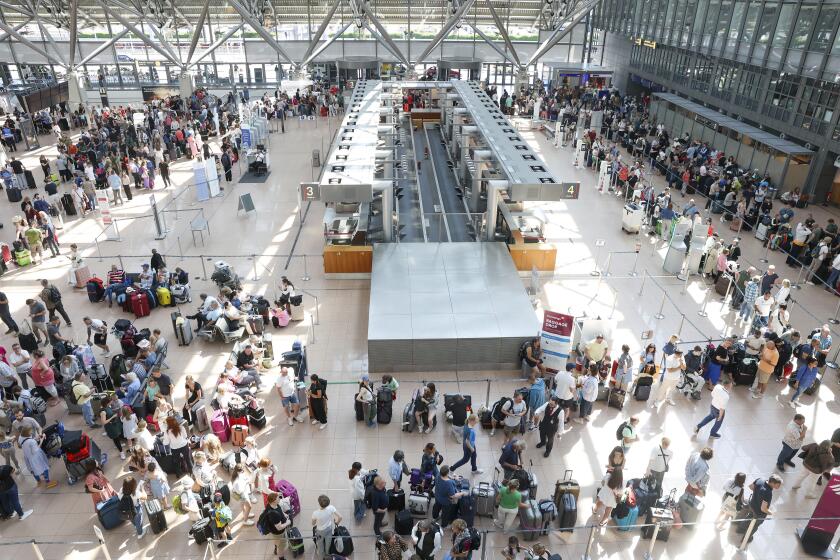FOCUS : Japanese, U.S. Differ on Intent of Chip Accord
The ink was barely dry last week on a new agreement to give American semiconductor producers greater access to Japanese markets when it became apparent that the two sides had very different views of what they had just agreed upon.
“We have an agreement that says we should have a 20% market share by the end of 1992,” W. J. (Jerry) Sanders III, chief executive of Sunnyvale-based Advanced Micro Devices Inc., said at a press conference last week following meetings between the American Semiconductor Industry Assn. board and a Japanese semiconductor users group.
“The U.S. government ideologues have been overthrown,” says Sanders, referring to pro-free market officials who have argued against setting market share targets.
Officials at Japan’s Ministry of International Trade and Industry, however, put far less significance on the 20% number. “We consider the (20%) figure not as a target but as a recognition of expectations by the U.S. semiconductor industry,” says Eichi Hasegawa, director of North American trade policy planning at MITI.
“Even if the 20% is not reached, it doesn’t mean Japan contravened the agreement.”
When the actual wording of the agreement is released Tuesday, it will prove ambiguous enough to support either argument, insiders say. And to further obfuscate matters, the agreement will include two methods of calculating market share, with the American side showing a clear preference for the first and the Japanese side showing a clear preference for the second.
“If you look at the agreement, it just looks like the two sides have agreed to disagree,” says one U.S. executive close to the negotiations. “How can you call it an agreement when they haven’t agreed on a single system of measurement?” The ambiguity of the document could both undercut the aims of the agreement and sow the seeds of new trade friction, the executive says.
The original chip accord, which was signed in 1986 and expires July 31, has been heralded as one of America’s few successful trade agreements. Since 1986, America’s share of the Japanese market has climbed to 13% from 8.6%. The U.S. Department of Commerce praised the industry for boosting sales in Japan to $2.5 billion in 1990 from $920 million in 1986. But most of those gains came after 1988, when then-President Reagan slapped sanctions on Japanese electronics products, charging Japan with failing to live up to the accord.
The strength of the agreement, semiconductor executives say, was that it held Japan to a specific numerical target rather than relying on streamlining “processes” to make the market more open and that it was backed with sanctions.
“The only way to achieve significant progress is to negotiate an agreement with specific numerical goals,” says Kevin L. Kearns, a fellow at the Economics Strategy Institute. “But you can’t then back away from it.” Under the new agreement, he says, the language is too vague to support sanctions in the event that Japan fails to reach the 20% goal.
And American chip makers are almost certain to fall short of that number. To reach the 20% share using numbers from World Semiconductor Trade Statistics would require American companies to increase their sales by more than 50% in the next 18 months, a Herculean task in the best of times. With the Japanese economy slowing, market share gains will grow increasingly difficult. Last year, the foreign share of the Japanese market was stuck at about 13%.
And the easy gains among the large, more international companies have already been made. Toshiba, for example, bought 24% of its chips from foreign buyers last year, up from 15% in 1987. But the company says it does not expect any dramatic increases in foreign purchases in the next 18 months.
While American companies may have more room for improvement among smaller buyers, those markets are more difficult to penetrate.
Some U.S. semiconductor executives say they would be satisfied with even an 18% share if there is evidence that progress is being made. They say the U.S. government has offered assurances that it will impose sanctions if no significant progress is made. But one cynical industry official notes that with U.S. trade negotiators revolving through their positions so quickly, by the time problems arrive the trade officials who offered the assurances could be long gone. Their replacements would be forced to rely on the more ambiguous language in the agreement.
If the agreement is too vague to satisfy proponents of managed trade, it is strong enough to get many in Japan worried about the future of free trade. Japanese newspapers have come out against the agreement with editorials using unusually strong language. The Asahi Shimbun, the nation’s most prestigious daily, castigated American companies for “using the treaty to increase sales without making their own efforts while Japanese industries spend day and night developing better products.”
The Nihon Keizai Shimbun, the nation’s largest business daily, called it “utterly incomprehensible” that the government has tried to set a figure to control share in a free market.



